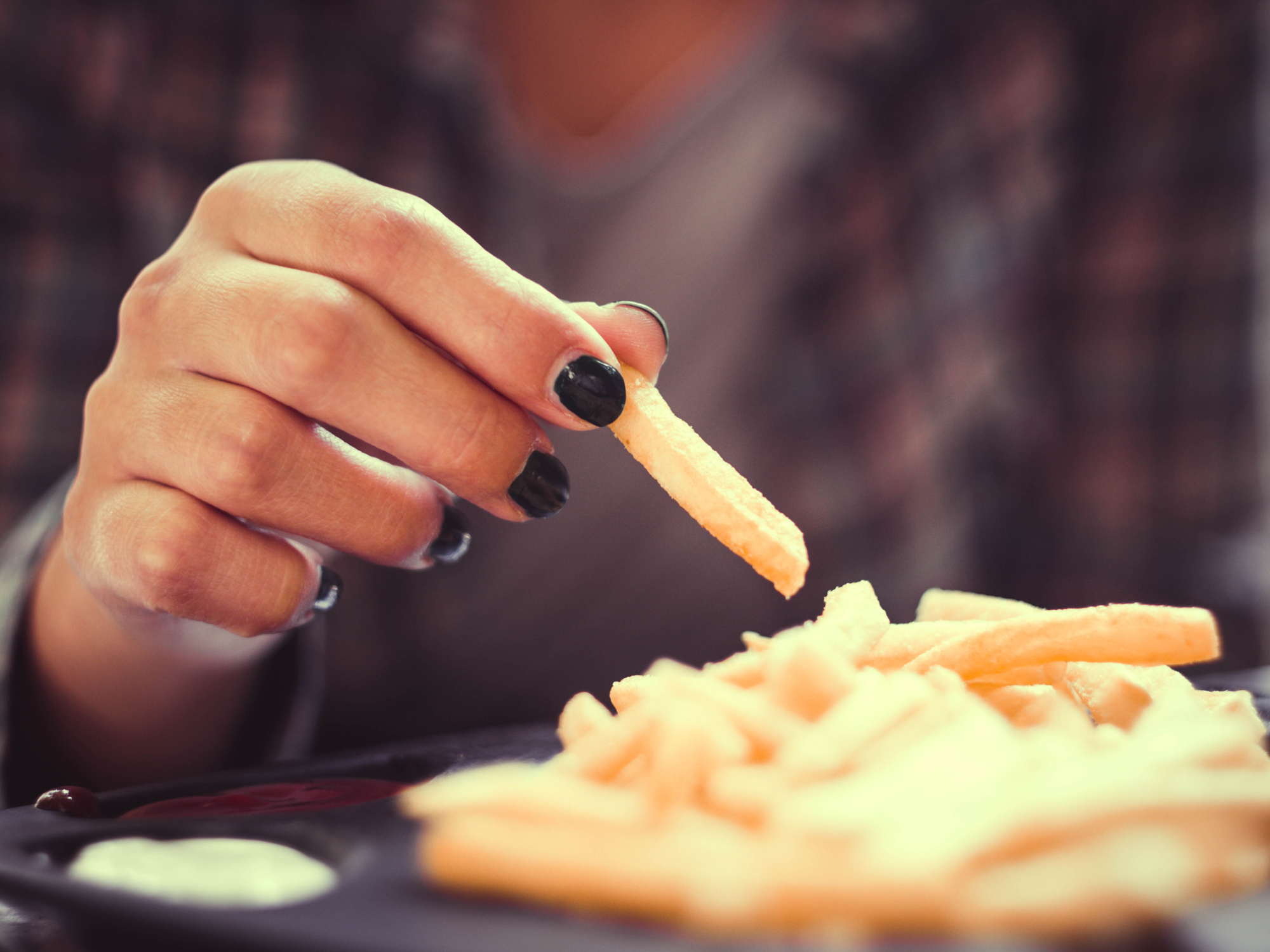Get Easy Health Digest™ in your inbox and don’t miss a thing when you subscribe today. Plus, get the free bonus report, Mother Nature’s Tips, Tricks and Remedies for Cholesterol, Blood Pressure & Blood Sugar as my way of saying welcome to the community!
4 ways to avoid food industry tricks that make you eat more

Have you ever gone into a fast food restaurant planning to order just one small item and ended up eating a whole meal loaded with more calories than you should eat in three days?
If so, according to a new study, you may have been a victim of food cues – signals that stimulate brain activity and nudge you to overeat due to increased cravings and hunger… In other words, they trick you into thinking you’re hungry and increase your desire for food.
And, the bad news is that restaurants know all about the power of these food cues and they strategically use them to get you to order more, spend more and yes… eat more – leaving you to pay the price with your wallet and your waistline.
So, what are these food cues and how much do they really affect you?
220 Extra calories
In the study conducted at the University of Michigan involved 112 college students were randomly assigned to eat in either a fast-food laboratory, designed to look like an actual restaurant where they were exposed to food cues or in a neutral lab, without food cues.
The students first ate lunch an hour before the study (so that they shouldn’t really be hungry) and then were given tokens they could use to either buy foods typically available at fast-food restaurants, like cheeseburgers, French fries, milkshakes and sodas or play video games on a tablet.
The study found that the students that ate in the fast-food lab, where they were exposed to food-related cues, ate more than the students in a neutral environment.
In fact, the students in the fast-food environment ate on average 220 more calories than those who ate in non-cue locations.
If you did that five days a week, that’s 1,100 extra calories or almost a pound of fat in just one week, just thanks to those sneaky food cues!
Beating the restaurant game
The mouth-watering aroma of juicy burgers and crispy fries, and the eye-catching menu signs with delicious food pictures are all food cues restaurants use to tempt you to stop more often and eat more. And, they work.
But, don’t despair. You don’t have to turn to prescription diet pills to beat restaurants at their own game and avoid eating more and gaining more.
Although it’s hard to avoid food cues, there are strategies you can use to minimize your exposure and prevent overeating.
#1 – Don’t go inside
That’s right… The first strategy is to stay out of the restaurant. Although there are food cues outside on the menu board to tempt you, inside the restaurant is even worse. Plus, it’s harder to say “no” when the friendly face behind the counter offers to supersize your meal. So, if you have to stop, use the drive-thru.
#2 – Use technology
Food cues aren’t just in the restaurants either. They’re also in all of those commercials on TV. So, take advantage of the technology available to you and use it to skip commercials altogether so you won’t be tempted to eat out for your next meal.
#3 – Question your order
Before you place your order, take the time to run it through your head and question whether you’re really that hungry or is there something you could cut. You’ll be surprised at how little of what you were planning on eating you really need to feel satisfied. And just because it might seem cheaper to get the meal deal instead of a single burger — remember the cost to your waist and health.
#4 – Look at your food
Once you do sit down to eat, pay attention to the food you’re about to put in your mouth. Stop everything else you’re doing, and when you’re eating and just eat. Being aware and spending time chewing each bite can increase your awareness of your body’s full signals.
Don’t let the food cues used by the fast-food industry tempt your taste buds and trick you into overeating. Use the strategies above to avoid food cues and beat the restaurants at their own game.
Source:
- Tempting your taste buds: Food cues entice consumers to overeat — University of Michigan












